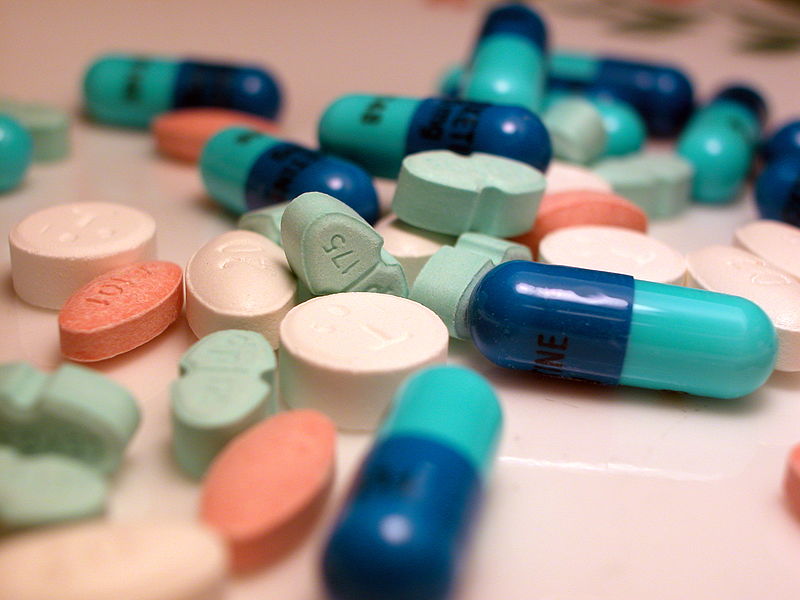Forbes – June 30, 2011
by Martin Fridson
 In 2006, The New York Review of Books reported that four-year-old Rebecca Riley died of the effects of two prescription drugs—Clonidine and Depakote.
In 2006, The New York Review of Books reported that four-year-old Rebecca Riley died of the effects of two prescription drugs—Clonidine and Depakote.
These medications, along with Seroquel, were prescribed for Rebecca after she was diagnosed, at the age of two, with attention deficit hyperactivity disorder (ADHD) and bipolar disorder. The three drugs are not approved by the Food and Drug Administration (FDA) for treatment of ADHD or long-term treatment of bipolar disorder, nor are they approved for children as young as Rebecca.
The New York Review of Books‘ recent two-part article (1) by Marcia Angell on the treatment of mental illness with psychoactive drugs (those that affect the mental state) addresses an issue that may one day prove very important to investors in pharmaceutical stocks. (All statistics and quotations herein are drawn from Dr. Angell’s article.)
It is not illegal for a doctor to prescribe a drug off-label, that is, for a non-FDA-approved use, but a drug marketer cannot lawfully encourage a doctor to do so. The profits in psychoactive drugs, however, make it tempting to flout the law. In the past four years, AstraZeneca (AZN), Pfizer (PFE), Eli Lilly (LLY), Bristol-Myers Squibb (BMY) and Forest Labs (FRX) have all settled federal charges of marketing psychoactive drugs off-label, at a cost running into hundreds of millions.
Seeing that pharmaceutical marketing executives are evidently undeterred by the law, Dr. Angell, a senior lecturer in social medicine at Harvard Medical School and former editor in chief of The New England Journal of Medicine, advocates a prohibition on prescribing psychoactive drugs off-label.
A ban would cut into a major growth area for pharmaceutical companies.
This growth is not a function of a few blockbuster drug discoveries. It parallels an extraordinary rise in the portion of the population, particularly children, diagnosed with mental illness. For example, if diagnoses mirror the actual incidence of juvenile polar disorder, that affliction grew forty-fold between 1993 and 2004.
Have mental disorders genuinely proliferated that dramatically? Dr. Angell suggests instead that the surge in certain diagnoses reflects a long-run shift in emphasis from “talk therapy” to medication. This change just so happens to enable psychiatrists to see more patients and earn higher fees. Not incidentally, with drugs now regarded as the preferred mode of treatment, the increase in diagnoses is a boon to pharmaceutical manufacturers. The new generation of psychoactives has displaced cholesterol-reducing medications as the biggest-selling class of drugs in the U.S.
Also benefiting from the present arrangement are low-income families that receive Supplemental Security Income (SSI) payments on the basis of mental disabilities. To qualify, applicants (children included) generally must be taking psychoactive drugs. Getting into the program usually also ensures that the family will qualify for Medicaid. The disbursements can be so substantial that MIT economics professor David Autor describes SSI as “the new welfare.”
The parents and two siblings of Rebecca Riley, the four-year-old who died from the effects of off-label drugs, were all on psychoactive drugs and were receiving about $30,000 a year from SSI. Dr. Angell links the astonishing rise in diagnoses of certain mental disorders to the huge financial stakes of physicians, pharmaceutical companies and SSI recipients.
I do not want to portray this issue as an imminent or mortal threat to pharmaceutical stocks. If a ban on off-label prescription of psychoactive drugs were proposed in Congress, the companies’ lobbyists probably could stave it off for a long time. Furthermore, the major pharmaceutical companies have widely diversified product lines, so a setback in the psychoactive category, even though it is a major growth area, would not be a body blow.
Still, this topic is one to keep an eye on for investors who hope to gain an edge by seeing beyond the quarterly EPS data. Psychoactive drugs have been around since the 1950s, but parents can readily observe that their use with children is far more widespread than it was a generation ago. If advocates such as Marcia Angell can make a persuasive case that the change is not fully justified on medical grounds, yet poses significant health hazards, is it unrealistic to expect a public opinion backlash some day?
[1] Marcia Angell, “The Epidemic of Mental Illness: Why?” The New York Review of Books (June 23, 2011), pp. 20-22 and “The Illusions of Psychiatry” (July 14, 2011), pp. 20-22. The article is a review of three books on the contemporary practice of psychiatry by Irving Kirsch, Robert Whitaker, and Daniel Carlat.
http://blogs.forbes.com/investor/2011/06/30/bad-side-effects-ahead-for-pharma/

